Great Lakes Cicada Page | home
Introducing the Cicada | Life Cycle | 1999 Brood V Account | My Journeys | Magicicada Galleries | Magicicada Gallery 2 | Magicicada Nymphs | Chimneys & Emergence Holes | Magicicada Emergence | Magicicada Emergence 2 | Magicicadas Feeding | Magicicada Mating | Magicicada Ovipositing | Eggs & Egg Damage | Cicada Mortality | Brood Maps | Tibicen Galleries | Tibicen Gallery 2 | Tibicen Nymphs | Tibicen Emergence | Tibicen Emergence 2 | Tibicen Feeding & Ovipositing | Okanagana Galleries | Field Guide | How to Find | Deterrence | Armed Robbery??? | My Story | About Me | Cicada Links | The Future
Tibicen Nymphs
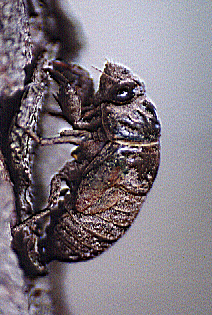
Beginning in late June to mid July, the Magicicadas disappear to allow for a second round of cicadas. Nymphs such as this one, emerge from the earth in search of a suitable perch to shed its final skin.
Photo taken: Summer 1999
St. Joseph Cemetery
Fremont, Sandusky County, Ohio
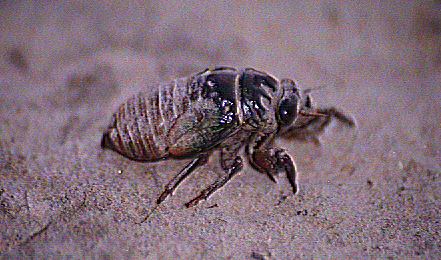
Some nymphs can crawl great distances. Normally they molt within proximity of their host plant.
Photo taken: Summer 1998
Our Lady of the Pines
Sandusky County, Ohio
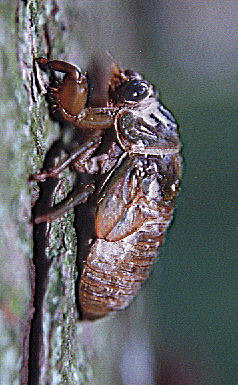
Nymphs can climb between two inches and forty feet up the side of a tree in search of a favorable support. Note the mature wing flaps along the side of its body.
Photo taken: Summer 1998
Our Lady of the Pines
Sandusky County, Ohio
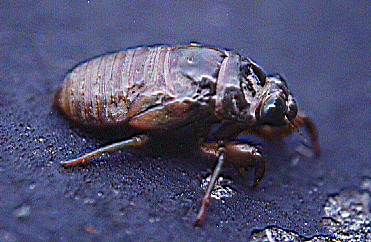
A nymph that was located crawling across a parking area near a row of Pine trees.
Photo taken: Summer 1998
Our Lady of the Pines
Sandusky County, Ohio
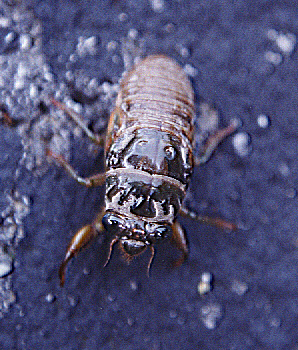
An overhead view of a Tibicen nymph.
Photo taken: Summer 1998
Our Lady of the Pines
Sandusky County, Ohio
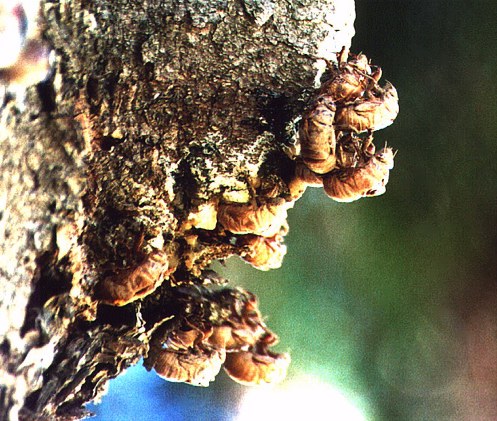
A good year for the Tibicen. This particular tree had over 200 exuviae clinging to its trunk and branches.
Photo taken: 08/2000
The Basilica & National Shrine of Our Lady of Consolation
Carey, Wyandot County, Ohio
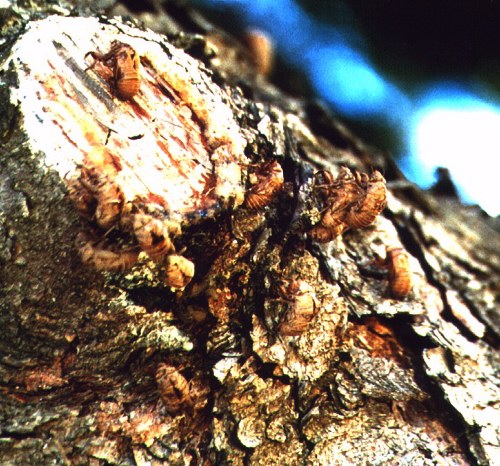
In fact, there were several trees nearby that also had at least 200 or more exuviae clinging to them. These extreme numbers are unusually high for a Tibicen emergence. Generally, not more than 5 or 6 per tree are observed. This area varied between 20 to 220 per tree.
Photo taken: 08/2000
The Basilica & National Shrine of Our Lady of Consolation
Carey, Wyandot County, Ohio
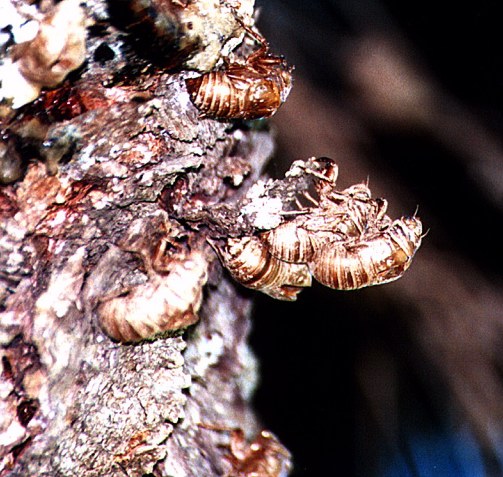
A group of Tibicen exuviae clustered together.
Photo taken: 08/2000
The Basilica & National Shrine of Our Lady of Consolation
Carey, Wyandot County, Ohio
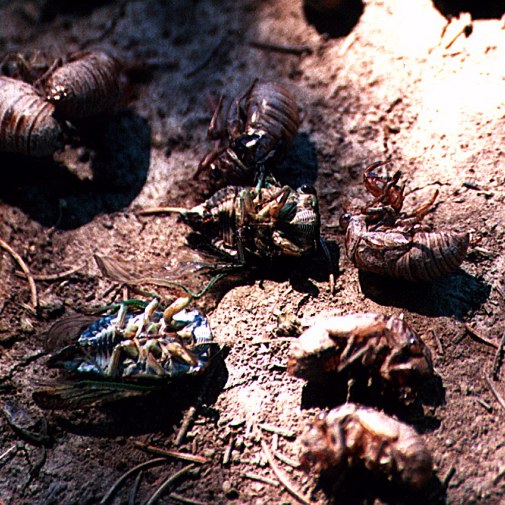
Like the Magicicada, some fell victim to overcrowding. These 2 females failed to molt successfully and lay among the discarded shells that littered the ground at the base of a tree.
Photo taken: 08/2000
The Basilica & National Shrine of Our Lady of Consolation
Carey, Wyandot County, Ohio